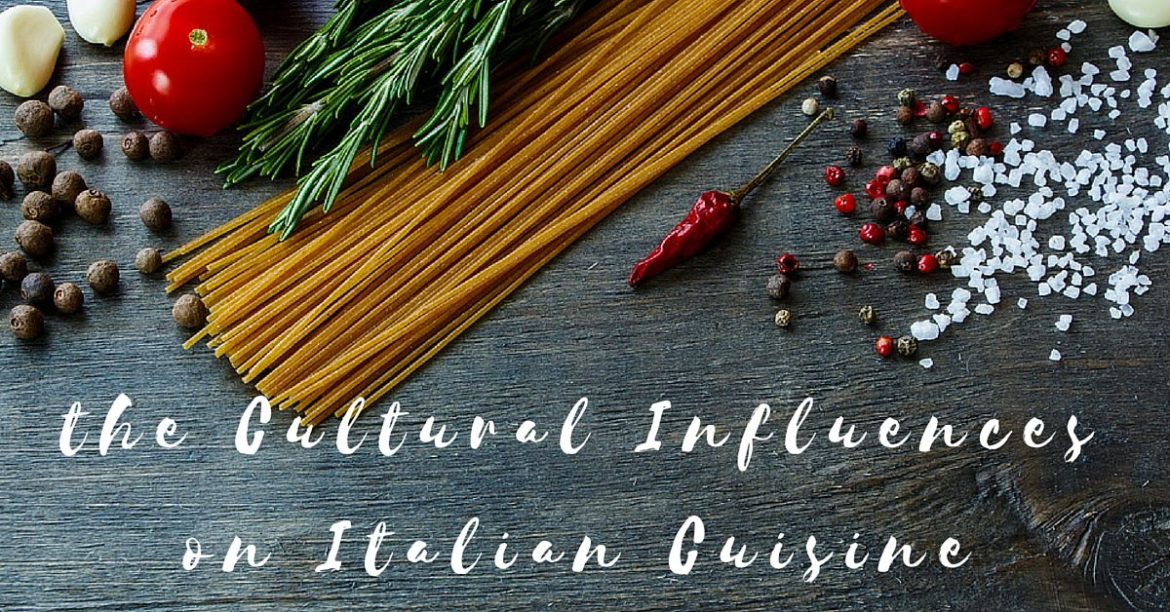- Tomatoes: A Taste of Summer - July 26, 2017
- The International Origins of Pasta - July 12, 2017
- A History of Italian Americans in Salt Lake City - June 29, 2017
The Cultural Influences on Italian Cuisine
Italian cuisine is distinct and renowned, tracing back thousands of years. As with all great cuisines of the world, Italian cuisine is a composite of influences from many different cultures over a large expanse of time. Today, we explore the cultural influences on Italian cuisine – from antiquity to present day.
The Beginnings of Italian Cuisine
The beginnings of Italian cuisine can be traced back to ancient Rome – both the food itself and the spirit of eating. The Roman Empire stretched across a vast area of the ancient world, from the Middle East to North Africa to the Mediterranean. As the Roman Empire conquered different areas, the spices and ingredients of these lands were incorporated into Roman cuisine.
Dishes of the Roman Empire included the exotic and the familiar. Staples of the typical Mediterranean diet can be found in these early beginnings, with items such as wine, olive oil, bread, vegetables, legumes, and cheeses. Romans also experimented with ingredients such as ostrich meat, fish sauces, and roasted game.
Pasta, one of Italy’s most famous food items, is traced back to the Etruscans who conquered Rome in 800 BC. Food historians have identified a mural in an Etruscan tomb which depicts the making of pasta: cooks are shown mixing flour and water, with tools such as a rolling pin and a cutting machine. Other early influences on pasta include the Greeks, who introduced makrios – perhaps a predecessor of macaroni, and the Arabs, who introduced ittrya, an early ancestor of fusilli.
In the 1st century AD, we find one of the world’s oldest known cookbooks, De re coquinaria (On Cookery), compiled by Marcus Gavius Apicius. This cookbook collects ancient Roman recipes. In these early years, breadmaking was introduced to Romans by the Greeks, and fermentation of grapes turned grape juice to wine.
Italian Cuisine in the Middle Ages
After the fall of the Roman Empire, the region was conquered by many different groups, from the Visigoths to the Byzantines to the Arabs to the Normans to the Huns. Until the reunification of Italy in 1860, the many groups moving through left an indelible mark not only on Italian life, but also Italian cuisine.
During the Middle Ages, Sicily was occupied by Arab Muslims. During this period, many different spices and fruits were introduced into the peninsula. Additionally, during this period of sea travel, innovative cooking techniques were developed to preserve food for long voyages. From this time, we find the development of dried pasta.
Religion also played a large role on Italian cuisine during this time. In the Christian faith, many dietary restrictions were placed, as different foods were associated with sin and sexuality (i.e. the apple of Adam and Eve). Meat was eaten sparingly for religious reasons, and thus the popularity of fish, bread, cheese, egg, legumes, and fruit began to rise.
Culinary Rebirth in the Renaissance
The Renaissance greatly influenced cuisine in Italy, with increased communication between neighboring countries in Europe. With dense urban centers the site of trade and commerce, the role of cuisine changed within Italy, moving away from isolated agricultural traditions. Now, food became a source of enjoyment and cultural exchange. During this time, many different spices and ingredients passed through Italy’s ports, and kitchens of the wealthy were staffed with professional cooking staff.
During this time, the tomato was introduced to Italy by the Spanish, who was ruling Naples. Tomatoes were native to Peru, and the origin of the word comes from the Mayan xtomatl. It did not take long for tomatoes to become a staple in Italian cuisine. Other foods from “the New World” include zucchini, peppers, squash, beans, corn, and chocolate. These foods have now made their way into staples of Italian cuisine.
Italy Reunified in 1860
When Italy unified in the mid-19th century, the distinct flavors of different geographical regions of the peninsula became Italian cuisine. The regions of Italy, to this day, showcase the diverse array of ingredients and flavors.
In an ever-growing globalization, Italian cuisine has been shared far and wide, taking on regional flavors in countries around the world and itself becoming a cultural influence. In the United States, for example, you will find the influence of Italian cuisine in places such as Philadelphia with the cheesesteak and New Orleans with the muffuletta.
And, in our little corner of the world in Salt Lake City, you’ll find some of the finest Italian cuisine at Cucina Toscana.
JOIN US FOR THE FINEST ITALIAN FOOD (AND WINE) IN SALT LAKE CITY
CUCINA TOSCANA
282 S 300 W
SALT LAKE CITY, UT 84101
PHONE: (801) 328-3463

